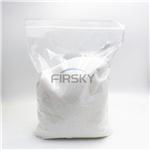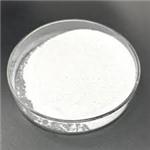In March 2013, istradefylline (also known as KW-6002) was approved in Japan for adjunctive treatment of Parkinson’s disease (PD). Istradefylline acts by antagonism of the adenosine A2A receptor, which is colocalized with dopamine D2 receptors in the striatum, to enhance dopamine D2-dependent signaling. Istradefylline is a light-sensitive compound and has been evaluated in vitro under low-light conditions to prevent isomerization of the (E)-styryl group and decomposition. Istradefylline has a Ki of 2.2 nM for the rat adenosine A2A receptor and an ED50 of 0.03 mg/kg, po, in reversal of haloperidol-induced catalepsy in mice. Further characterization showed istradefylline to have a Ki of 12 nM for the human adenosine A2A receptor, to be highly selective, and to be a functional competitive antagonist. Istradefylline has activity alone and in combination with levo-dopa in preclinical animal models of PD. The synthesis of istradefylline was accomplished by 1-ethyl-3-(3-dimethylaminopropyl)carbodiimide-mediated coupling of 5,6-diamino-1,3-diethyluracil with 3,4-dimethoxycinnamic acid, followed by cyclization upon treatment with aqueous NaOH, and selective methylation (MeI, K2CO3, and DMF).
![8-[(E)-2-(3,4-dimethoxyphenyl)ethenyl]-1,3-diethyl-7-methyl-purine-2,6 -dione](https://www.chemicalbook.com/CAS/GIF/155270-99-8.gif)





